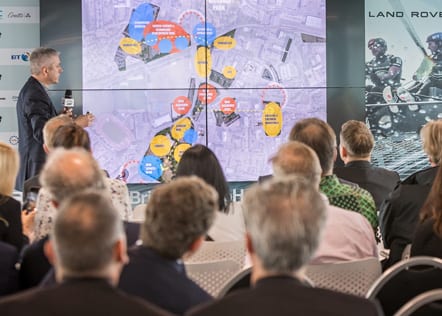University of Portsmouth Masterplan completed
Date posted: July 14, 2017
ArchitecturePLB’s masterplan for the University of Portsmouth has been completed. Launched at a breakfast event in the city last week, the proposals were developed in support of the University’s strategic vision and will be rolled out over a 15-20 year period with a planned expenditure of circa £400m.
The University of Portsmouth is growing rapidly and now has over 23,000 students and employs over 2,500 staff. Supporting the local and regional economy, experts recently calculated it’s contribution to be around £300 million in annual benefit to the local community.
Our proposals create a distinctive and coherent university quarter; with a clear sense of arrival, through a series of new gateway buildings; which support a range of teaching and learning styles that inspire the mind; that is coherent and legible, connected by safe, active and attractive routes and spaces, integrated within the rest of the city; that embeds principles of economic, social, and environmental sustainability at its core, in the design; and which considers the management of buildings, infrastructure and external spaces.
We developed an urban design and public realm strategy that provided an overarching shape and context within which all the identified masterplan projects would sit. This element of the work includes proposals for high quality external spaces, active frontages to surrounding buildings, safe and attractive routes creating improved connectivity across the whole campus, and an enhanced sense of place and purpose. The intention was not only to improve the experience for the whole University community, but also further integrate the University with the City, making a series of places that could be enjoyed by all.
We also identified a number of buildings as candidates for major refurbishment that could significantly contribute to energy savings, and support the University achieve its HEFCE targets. Our recommendations included optimising the performance of the existing estate through enhanced energy saving policies and a planned programme of minor refurbishment works and upgrades; carrying out major refurbishment, with a particular focus on energy saving, of existing buildings which perform poorly in terms of energy but are otherwise sound and fit for purpose; replacing existing buildings with new buildings which have excellent energy performance and sustainability credentials; and the use of energy from low-carbon sources which are robust to future changes in energy policy and infrastructure.




